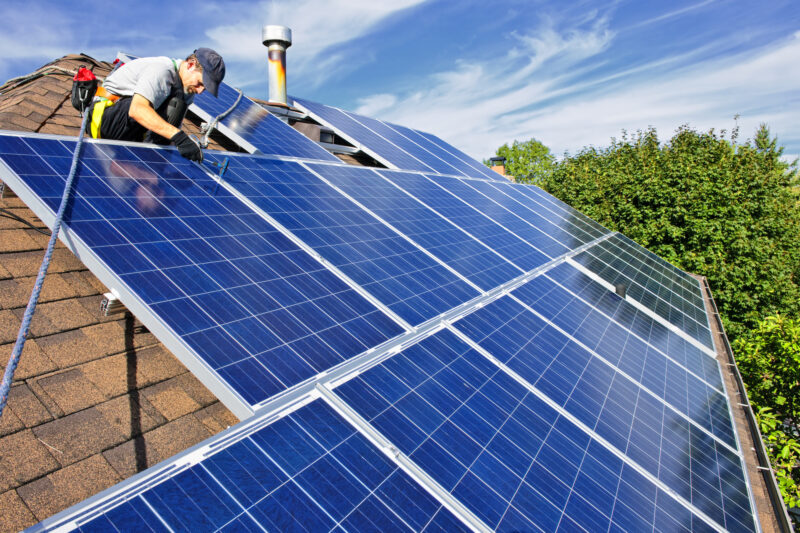
Comparing Solar Panels – What to Consider Before You Buy
If you are thinking about getting solar panels for your home or business, then there are several things you should consider before you buy. You should also be aware that different types of solar panels are available, including monocrystalline and thin film.
Efficiency Rate
The efficiency rate of solar panels depends on many different factors. In particular, the panel type is one of the most important determinants. The best efficiency panels are usually monocrystalline. This allows more energy to be produced per watt of light that hits the cell. However, most solar panels offer an energy efficiency rating of between eleven and fifteen percent.
As for the other solar-related “big” numbers, the most important one is how much sunlight the panel can capture. If you have a large roof, you may be able to achieve your energy needs by installing less expensive but less efficient panels. Also, you need to average to get familiar with the average cost of solar panels and their efficiency rate. The other notable determinant is the type of solar cell used. While the first commercially viable solar cell was made in the 1800s, in the late 1950s, solar cells started producing real-world benefits.
Another big determinant is the angle at which the panel faces the sun. An optimal angle will allow the panel to absorb the most sunlight. Solar panel efficiency has been increasing steadily in recent years. Scientists have even managed to achieve an efficiency rating of forty percent. It’s easy to determine a panel’s efficiency if you know its size and irradiance. You can find the formula for this on the specifications sheet of the panel or its nameplate.
If you’re considering installing solar panels, a trusted company like energyinitiative.co.uk can guide you through the process and help you choose the best system for your needs.
Monocrystalline
It is important to understand their differences when considering monocrystalline or polycrystalline solar panels. Using the correct panel type will help you save money on your power bill. This will allow you to enjoy the benefits of your solar system for years to come. Monocrystalline solar panels are made from a single crystal of silicon.
These panels are more efficient at converting sunlight into electricity. They also last longer than polycrystalline panels. Buying more efficient panels will also allow you more electricity per square foot. The process for making polycrystalline panels is similar to that of monocrystalline panels. However, the end product is more expensive and less durable.
In addition, the appearance of these panels is not quite as good as their monocrystalline counterparts. Polycrystalline panels are often referred to as multi-crystalline solar panels. They look a bit like shattered glass and have a marbled appearance. On the other hand, monocrystalline panels are more compact and sleek looking.
Although they may be more expensive, they are much more effective and efficient. Monocrystalline panels are the best choice if you have a small roof space. You can use the power you generate to power your home, save money on your energy bill, or sell excess electricity back to the grid.
Thin-Film
Thin-film solar panels are lightweight and flexible. However, they tend to be less durable than crystalline solar panels. Therefore, they are not recommended for homes with small rooms or for large buildings. Compared with traditional solar panels, thin film panels are also cheaper. This is one of the main reasons why consumers prefer them. But several downsides are also present.
For example, they do not have the same lifespan as crystalline solar panels and do not have the same output. They can also contain toxic materials, posing risks during operation and disposal. Nonetheless, these solar panels have been found to save electricity.
Moreover, they can be used for portable applications. It can be installed on boats, recreational vehicles, and commercial structures with tight spaces. In addition, they have the lowest payback time. The thin film solar market is expected to grow due to technological advancements, increasing demand for renewable energy, and the rising demand for sustainable development. Also, the market is expected to expand due to the rise in solar PV capacity. Lastly, the market is expected to grow based on the demand for energy efficiency.
Leasing Vs. Buying
A question often asked by people considering installing solar panels is, “should I buy or lease?” The answer is complicated, and it depends on your personal and financial goals. It is important to consider both options carefully before making a final decision. Additionally, if you go by the loan route, you’ll need to calculate what your solar loans would cost to see which solution is better.
If you have a good credit score and can afford monthly payments, you may want to consider purchasing your solar panels. This option gives you more control over your investment and makes the installation process easier.
However, the upfront cost of buying your panels will be more than leasing them. If you have a low credit score or you cannot afford to pay all of the upfront costs, you may want to lease your solar equipment. While this option is not as attractive, it can save you thousands of dollars in interest. You may also qualify for federal or state incentives that can reduce the cost of the panels.
Another option is to get a home equity loan. Equity loans are generally low-interest loans, and you can use them to finance the purchase of your solar panels. Using this method, you will not have to pay any interest on the loans and enjoy the tax benefits of owning your solar panels.
